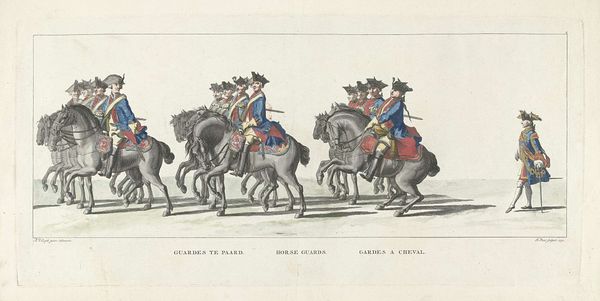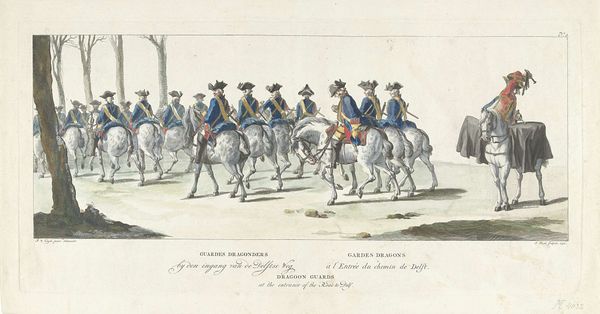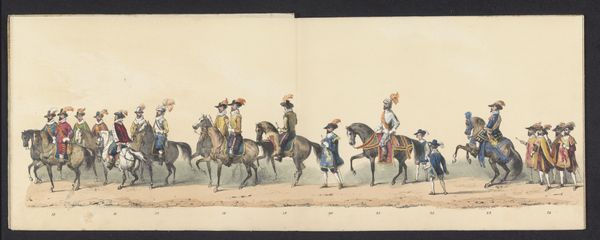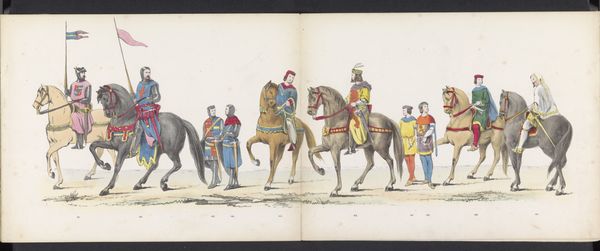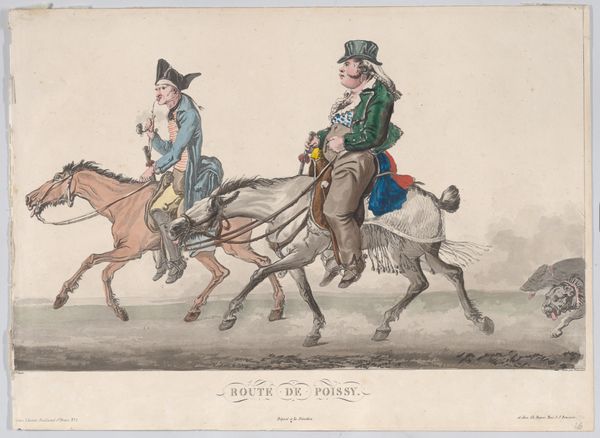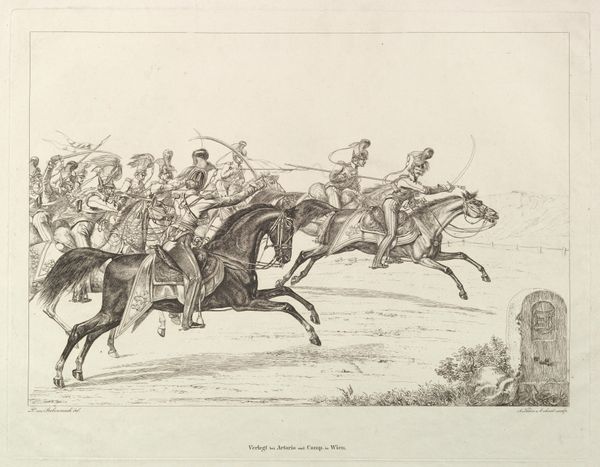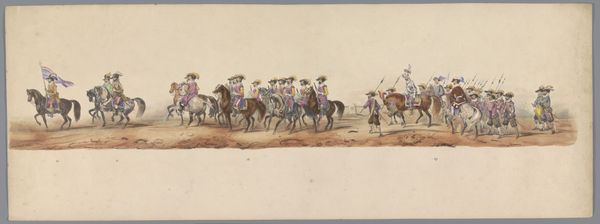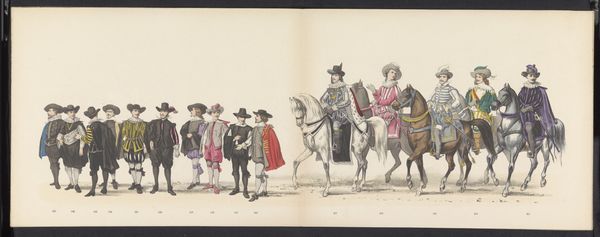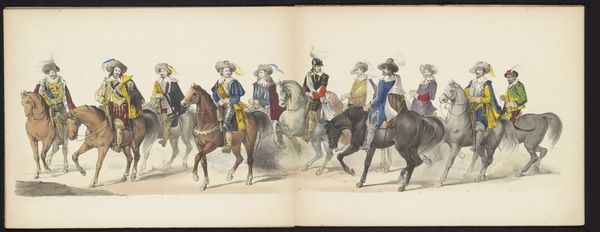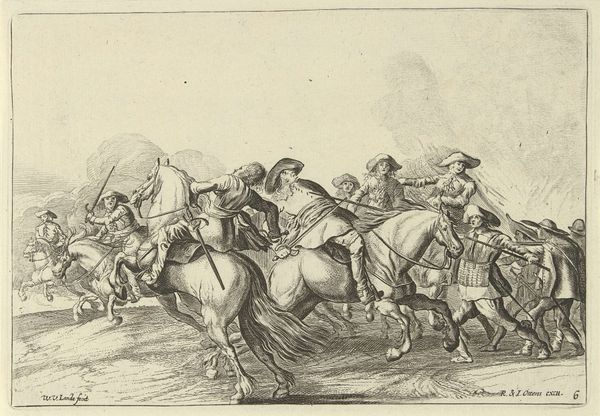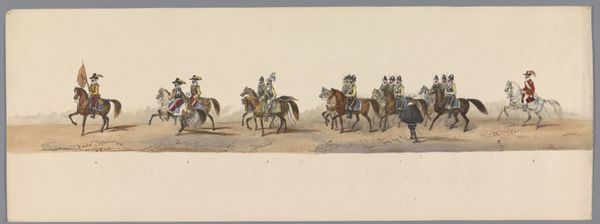
print, etching, engraving
#
portrait
#
baroque
# print
#
etching
#
cityscape
#
history-painting
#
engraving
Dimensions: height 270 mm, width 560 mm
Copyright: Rijks Museum: Open Domain
Editor: This print, titled "Lijkstatie van Willem IV, 1752, plaat 3," created by Jan Punt in 1752, depicts a stately procession of horse guards. It's rendered with etching and engraving. The repetitive nature of the composition strikes me. What do you see in the print? Curator: Indeed, the repetitive figures lend the piece a striking formal quality. The artist has rigorously employed line and form to achieve this effect. Observe the regimented rows of horses, each stride mirrored in its neighbor. Notice also how Punt uses the negative space—the emptiness between and above the figures—to further accentuate this linearity, emphasizing the forward motion of the procession. Editor: So, you're focusing on the structural elements rather than the event being depicted? Curator: Precisely. While the subject, the funeral procession of Willem IV, is undeniably significant historically, I’m drawn to how Punt uses the formal language of art to convey a sense of order and somber dignity. Note, for instance, the subtle variations in the postures of the horses and riders. Are these intended to introduce variety, or do they merely disrupt the overall rhythm? Editor: I see what you mean. The variations do disrupt the rhythm somewhat, adding a slight tension to the piece. I had not considered that tension to be part of the artistry until you mentioned the artist's structural goals. Curator: And what does that tension contribute, would you say, to the viewer’s interpretation? It’s these compositional elements, line, form, and tension that build meaning, independent of any narrative considerations. Editor: It adds complexity. The regimented order clashes with the slight chaos. Now, reflecting on the artwork again, I see more clearly how it’s designed around form rather than simply an event recorded in ink. Thank you for this analysis! Curator: My pleasure. I find new insights with each analysis, also!
Comments
No comments
Be the first to comment and join the conversation on the ultimate creative platform.

